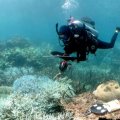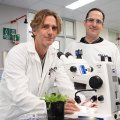University of Queensland researchers have helped set parameters for a national audit of the health and management of estuaries - the life force of many Australian industries and all capital cities.
The University, through the Moreton Region Consortium, completed the terms of reference or workplan for the estuaries aspect of the Federal government's National Land and Water Resources Audit.
"Estuaries - the point at which river fresh water and ocean salt water meet - are vital for industries such as fishing and for recreation. For example, the juvenile stage of barramundi depend on estuaries for survival," said Consortium member and University Deputy Vice-Chancellor (Research) Professor Paul Greenfield.
"Most of Australia's major urbanisation occurs long the banks of estuaries as well as some agricultural industries such as sugarcane.
"For this reason, estuaries are also often the receptacles for nutrient run-off and other pollutants including sewage.
"Until now, estuaries have been very poorly studied. This workplan brings together all the current work being done in each state and provides a basis for further action.
"Once the audit is completed, a cohesive estuaries management plan can be put into place to safeguard the health of these vital waterways."
The workplan includes a recommendation for $1 million worth of research projects to fill gaps in the knowledge base about Australia's estuaries.
Part of this research will be completed at the new Co-operative Research Centre (CRC) for Coastal Zone, Estuary and Waterway Management based at the University of Queensland.
The Federal Government recently announced funding of $13 million over the next seven years for the CRC.
The workplan for rivers, estuaries, catchment and landscape health is one of seven the Federal Audit Advisory Board will shape into a management plan for the nation's land and water resources. Others focused on areas such as rangelands, vegetation cover and land-uses.
The Moreton Region Consortium also consisted of the Botany Department's Associate Professor Bill Dennison and Dr Eva Abal, researchers and staff from James Cook University of North Queensland, the CSIRO and the Queensland departments of Natural Resources and Environment and Heritage.
Professor Greenfield said the University of Queensland's work on estuaries for the $5.2 million Brisbane River and Moreton Bay Wastewater Management Study as well as Dr Dennison's international estuary experience greatly contributed to its selection for the estuaries terms of reference team.
For more information, contact Associate Professor Bill Dennison (telephone 07 3365 2073) or Professor Paul Greenfield (telephone 07 3365 3917).
.jpg)



